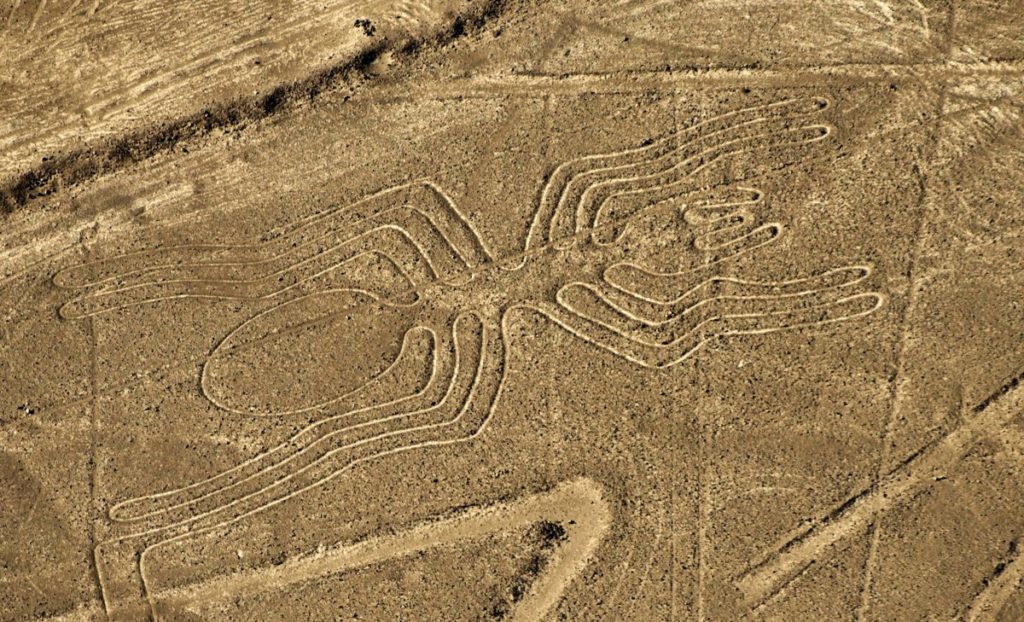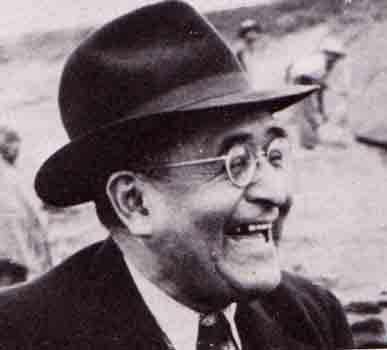Last updated on January 12th, 2023 at 11:03 pm
The Nazca Lines are one of Peru’s most famous tourist attractions. However, these geometric lines etched into the ground more than a thousand years ago still baffle scientists and archaeologists today.
Nobody knows why they were created. This blog post will look at some popular theories about the Nazca Lines and determine what secrets they may hold.

What Are the Nazca Lines, and Where Are the Lines Located?
The Nazca Lines are in the Nazca Desert in southern Peru. The desert is a dry, arid region that gets little rainfall. This has helped preserve the lines over the centuries.
The lines are found in the plains of Peru, some 200 miles southeast of Lima, near today’s modern town of Nasca.
The simple geometric designs include trapezoids, straight lines, rectangles, triangles, and even some swirls that form animal shapes.
When you consider all the sequences present, there are 800 straight lines, 300 geometric figures, and approximately 70 animal and plant designs, which some would call biomorphs.

Some lines run up to 30 miles, while the biomorphs can range from 50 to 1,200 feet in length. For context, that is as tall as the Empire State Building.
From the air, observers could see the land was desolate, scarred and crumpled, and full of dried-up stream beds and river gorges. The plains are hot and unforgiving and are a place where there is no vegetation, birds, or insects.
There’s rarely any wind and scarcely any rainfall, with only 0.02 inches a year of rain on the pampa.
How Old Are the Nazca Lines, and Who Was the First to Discover Them?
The arid plane where the Nazca lines are is in the middle of a strip of fertile land that hugs the Pacific coast and is crowded on the other side by the tall Andes mountains.
Unfortunately, this leads to conditions that make the plains desolate and unfit for anything else. The Nazca Lines are approximately 2,000 years old and were constructed by a pre-Inca civilization.
While it is rumored that travelers in the 1500s came across the Nazca Lines, it’s unclear what they discovered about them. We know they believed them to believe a complex system of roads from a vanished civilization.
It wasn’t until 1926 that a Peruvian archaeologist named Toribio Mejia Xesspe happened across the markings and observed the furrows in the valley.
They tried to study them but soon realized the massive size of these lines and that it would be nearly impossible to identify them from the ground.

The public wasn’t truly aware of this marvel until the 1930s when commercial airplanes flew over the Peruvian plains and witnessed the mysterious lines.
However, it wasn’t until 1941 that another archaeologist, Paul Kosok, an American professor, gained a different perspective on the lines. He discovered the Nazca people created these lines with a deep understanding of astronomy.
He did this by studying the sun’s position after the winter solstice in the Southern Hemisphere and discovered that one of the lines was pointing directly to the sunset.
After further study, he declared the Nazca Lines “the largest astronomy book in the world.” A German observer named Maria Reiche also studied the lines and fought so hard for her theories of an astronomical and calendrical purpose that she even received a grant from National Geographic in 1974.
What Are Some Theories About the Nazca Lines and How Did They Come to Be?
There’s also another secret if you happen to be walking along the pampa. While no one believes that the marks are there naturally, there’s evidence that an ancient civilization vanished long before.
Observers will notice fragmented pottery pieces and ruins of buildings made out of stone and adobe bricks. In addition, there appear to be stone tombs and even bleached skeletons wrapped in cloth scattered through the desert.
With the plains’ current condition, how would the ancient civilization that used to live here survive long enough to create the Nazca Lines?
Supernatural Origins
It’s not surprising that some of the first theories about the Nazca Lines’ origins were of spiritual or extraterrestrial nature. After all, how could ancient people create perfectly straight lines that stretch for miles without modern technology or the ability to fly?
The only way to see the Nazca Lines for the longest time was from the air, which only fueled more speculation. Some believe that the people created these lines based on instructions from extraterrestrials to build landing strips or attract more aliens to the planet.
Fans of this theory say biomorphs like the “Astronaut,” a humanoid figure with a bulbous head like a person in a spacesuit.
Furthermore, archaeologists found well-preserved mummies with elongated skulls that didn’t appear human. So, did aliens have something to do with the Nazca Lines? Most likely not.
What We Know About the Nazca Lines
While an alien-origin story sounds better, it’s doubtful the ancient people had visitors from space. Unlike the Pyramids or Stonehenge, the Nazca people could easily make lines using technology. Also, over time the pampa had developed a layer of rocks, stone, and gravel called desert pavement.
This desert pavement is considered the remains of rocks carried down from the Andes during heavy flooding.
Over hundreds of years, the exposure to air darkened the surface of the desert pavement, making it a dark, greyish brown color.
The ancient people realized this and scraped the rocky layer back, revealing a light, cream-colored sand underneath. It was only a matter of time before they realized they could use this color difference to create designs.
The ancient people would have started clearing away the dark rocks to create a path or line. Then, they would have continued scraping out the light-colored sand until they reached their desired depth. The final step would have been to go back and fill in the dark rocks to make a negative image of their design.
What Modern Studies Have Shown
A recent National Geographic Explorer named Johan Reinhard thought the lines had an ecological nature and were a means to perform rituals for water.
Water was an absolute necessity for the ancient people. Reinhard reached this conclusion after realizing that the lines didn’t point to anything celestial or geographical. Instead, they pointed to places where the Nazca people performed rituals to obtain water and the fertility of crops.
While no one theory is 100% proven, the most likely explanation is that the Nazca Lines stem from the need for water. The Nazca people needed to find a way to get the gods’ attention, and what better way to do that than by creating massive lines in the desert?
The Nazca Lines will continue to be one of Peru’s biggest mysteries, but that doesn’t mean we won’t eventually discover their origins as technology evolves.
It’s incredible how such an ancient civilization could adapt and change its beliefs based on its environment. The Nazca people are a perfect example of human resiliency and resourcefulness.

